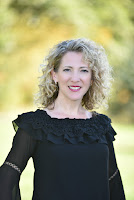Vocal Music
- A Song to the Lamb – Donald Pearson (b. 1953)
Instrumental Music
- Sonata No. 8: Andante Sostenuto – Alexandre Guilmant (1837-1911)
- Sarabande (Concerto for Oboe in G Minor) – G. F. Handel (1685-1759)
- Llanfair – Robert J. Powell (b. 1932)
Congregational Music (all hymns from The Hymnal 1982 with the exception of those marked “R” which are from Renew.)
- Hymn 214 - Hail the day that sees him rise (LLANFAIR)
- Hymn R168 - If you believe and I believe (ZIMBABWE)
- Hymn 325 - Let us break bread together on our knees (LET US BREAK BREAD)
- Hymn 460 - Alleluia! Sing to Jesus (HYFRYDOL)
- Psalm 97 – Tone IIa
Anthem: A Song to the Lamb
The American composer Donald Pearson wrote this setting of Canticle 18 while he was organist/choir master of St. John's Cathedral in Denver. Now a canticle (from the Latin canticulum, a diminutive of canticum, "song") is a hymn, psalm or other Christian song of praise with lyrics usually taken from biblical or holy texts. Canticles are used in Christian liturgy. You are probably most familiar with canticle 20 - we sing it most Sundays at the beginning of the service. (Glory to God in the Highest.) Other familiar canticles are the Magnificat and the Nunc Dimittis, which are common at evening prayer services.
This setting starts of with a sparkling organ intro, which continues under the refrain which returns after each verse. The refrain was obviously meant for the congregation to sing, but today we will just leave it to the choir.
Opening Voluntary: Sonata No. 8: Andante Sostenuto
Andante Sostenuto is the fourth movement of Alexandre Guilmant's Eight Sonata in A Major, Opus 9, completed at the composer's home in September 1906 and dedicated to Louis Herbette, a councilor of state. He later orchestrated the work as the Secondo Symphonie pour Orgue & Orchestra. It has some rich, thick chords which remind me of the opening of Camille Saint-Saens Organ Symphony which was written some 20 years earlier.
Félix-Alexandre Guilmant was a French organist and composer who was well known both as a recitalist and as a composer. His organ repertoire includes his 18 collections of Pièces dans différents styles (pieces in differing styles), the more liturgical Soixante interludes dans la tonalité grégorienne (60 pieces in Gregorian tonality) and his 12 books of l'Organiste liturgique (the liturgical organist). He also wrote chamber music, vocal music, a sinfonia cantata (Ariane) as well a lyric scene (Bathsheba).
Communion Voluntary: Sarabande
This is the third movement of Handel's Oboe Concerto No. 3 in G minor (HWV 287) composed possibly in 1704-1705. It was arranged for organ by Edward Shippen Barnes, an American organist from the first half of the 20th century who was well known for his editions of organ transcriptions of orchestral works.
Here is a recording of the Houston Early Music group, Ars Lyrica, performing this movement. (Don't listen to it in church!)
Closing Voluntary: Llanfair
The closing voluntary is a setting of our opening hymn by the living Episcopalian composer Robert J. Powell. He is known to our congregation if for no other reason than his setting of the Gloria (Canticle No. 20 - see above) that we have been singing each Sunday during Eastertide.





